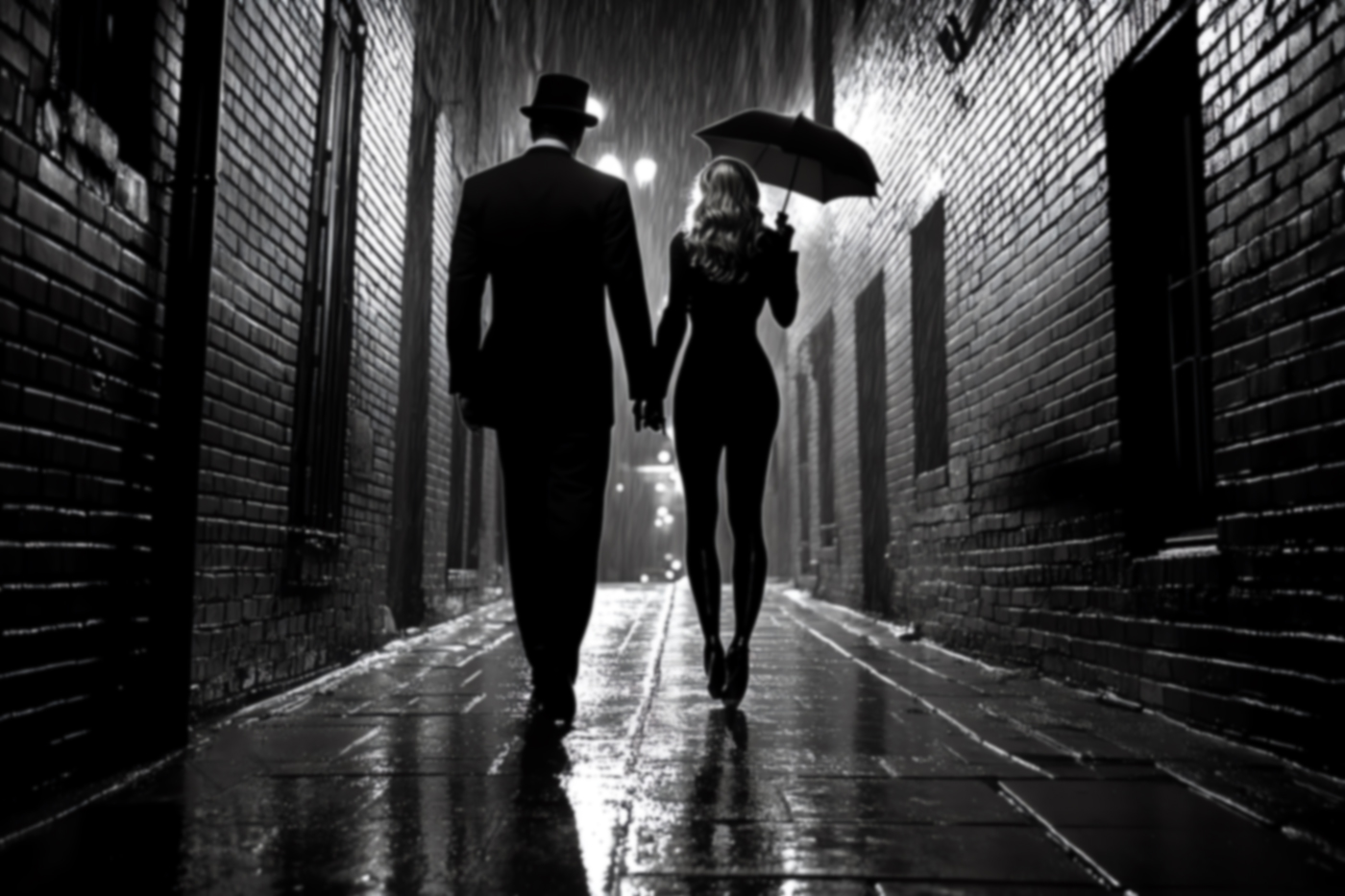Character Archetypes and Development in Film Noir
Explore the key character archetypes in film noir—from the hardboiled detective to the femme fatale—and how they’ve evolved in neo-noir.
Introduction: People in the Shadows
The characters of film noir are as iconic as its shadows and slanted light. They are more than participants in the plot—they are embodiments of the genre’s worldview. Whether it’s the cynical hardboiled detective, the seductive femme fatale, or the doomed anti-hero, noir’s archetypes are defined by moral ambiguity, survival instinct, and an uneasy relationship with truth.
These figures are not static. As noir evolved into neo-noir, so too did its characters—reflecting shifting cultural attitudes toward gender, power, and morality. Studying these archetypes reveals not only the mechanics of noir storytelling but also the anxieties and desires of the eras that produced them.
The Hardboiled Detective
Perhaps the most enduring figure in noir is the hardboiled detective—cynical, world-weary, but guided by a personal code. Born in the pages of Black Mask magazine through the works of Dashiell Hammett and Raymond Chandler, he came to life onscreen as Sam Spade (The Maltese Falcon, 1941) and Philip Marlowe (The Big Sleep, 1946).
Key Traits
- Operates outside or on the fringes of official law enforcement.
- Maintains a personal, often idiosyncratic moral code.
- Wields cynicism as armor against corruption and betrayal.
The detective’s independence makes him both admirable and alienated—trusted by few, and trusting fewer still. In neo-noir, this archetype often fractures: in Chinatown (1974), Jake Gittes is a private eye undone by forces beyond his control; in Blade Runner (1982), Rick Deckard questions not only the truth but the nature of humanity itself.
The Femme Fatale
The femme fatale is arguably noir’s most famous archetype: alluring, intelligent, and dangerous. She uses desire as a weapon, manipulating men to serve her own ends—though her motives are often more complex than mere greed.
Phyllis Dietrichson in Double Indemnity (1944) and Kathie Moffat in Out of the Past (1947) embody the classic version: beautiful, duplicitous, and ultimately fatal to the men who fall for them.
Key Traits
- Uses charm, sexuality, and wit as tools of power.
- Often positioned as morally ambiguous rather than outright villainous.
- Represents both male fantasy and male fear of female agency.
In neo-noir, the femme fatale has been reimagined to reflect changing gender politics. Characters like Bridget Gregory in The Last Seduction (1994) or Ava Lord in Sin City (2005) embrace their manipulative power while also acknowledging the social structures that necessitate it.
The Anti-Hero
Noir’s anti-hero occupies the space between the detective’s guarded morality and the femme fatale’s self-serving pragmatism. He is often an everyman drawn into crime—like Walter Neff in Double Indemnity—or a professional criminal facing the limits of his control, as in The Asphalt Jungle (1950).
Key Traits
- Morally compromised, yet relatable in human weakness.
- Motivated by personal gain, survival, or love—rarely justice.
- Often undone by a flaw that mirrors the film’s central theme.
In neo-noir, the anti-hero has become darker, more violent, and sometimes less sympathetic, as in Drive (2011) or Uncut Gems (2019). These modern figures reflect a world where self-destruction is not only inevitable but embraced.
The Corrupt Authority
Noir thrives on mistrust of institutions, and its corrupt authority figures—police captains, politicians, corporate magnates—embody that cynicism. In The Big Heat (1953), corruption permeates both city hall and the police force; in L.A. Confidential (1997), systemic rot shapes every investigation.
Key Traits
- Represents systemic failure rather than individual moral weakness.
- Often serves as the hidden antagonist behind the plot’s conflicts.
- Forces protagonists to operate outside legal boundaries.
These figures ground noir’s paranoia in political reality, reflecting eras when public trust in authority was at a low ebb.
The Innocent Outsider
The innocent outsider is less common but serves an important narrative role: highlighting the protagonist’s moral decay or the danger of the noir world. They are often a love interest, relative, or bystander drawn into events beyond their comprehension.
In Shadow of a Doubt (1943), young Charlie slowly realizes her beloved uncle is a murderer. In Memento (2000), Leonard’s vulnerability to manipulation marks him as an outsider in his own story.
Key Traits
- Naïve or inexperienced in the ways of the noir world.
- Functions as an audience surrogate in uncovering the truth.
- Often endangered by proximity to the protagonist.
Archetype Evolution in Neo-Noir
As noir moved into the latter 20th and early 21st centuries, archetypes evolved alongside shifting cultural attitudes:
- The detective became less certain, more morally entangled (Se7en, 1995).
- The femme fatale gained more agency and sometimes the narrative’s sympathy (Gone Girl, 2014).
- The anti-hero often embraced nihilism rather than fighting it (Nightcrawler, 2014).
This evolution mirrors broader changes in society’s relationship to morality, gender roles, and authority.
Character as Thematic Device
In noir, characters are more than plot functions—they are thematic devices. The detective embodies the possibility of moral choice in a corrupt world. The femme fatale interrogates power dynamics and the fear of autonomy. The anti-hero confronts the consequences of compromise. Together, they form a human constellation of noir’s central themes: moral ambiguity, betrayal, and the limits of control.
Conclusion: Low Throes and Noir Characters
The characters of film noir endure because they represent archetypes we recognize in life as well as fiction. They are flawed, compelling, and impossible to fully trust. For Low Throes, these archetypes inspire the characters who inhabit our songs—figures born from overheard lines, fleeting glances, and imagined histories. Like their cinematic counterparts, they navigate shadowed streets and blurred moral lines. Meet our cast of characters here »
From the gumshoe to the grifter, from the seductress to the stooge, noir’s people remain as captivating as its plots—and as long as there are stories to tell in the shadows, these archetypes will keep walking among us.


.png)